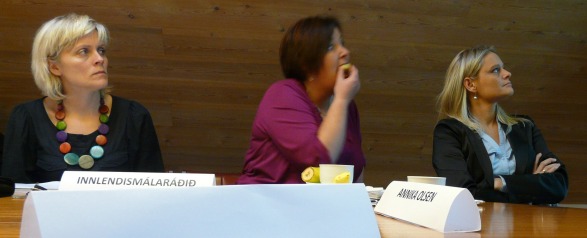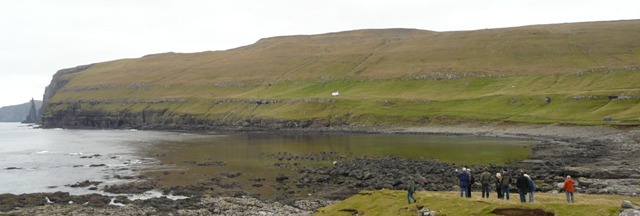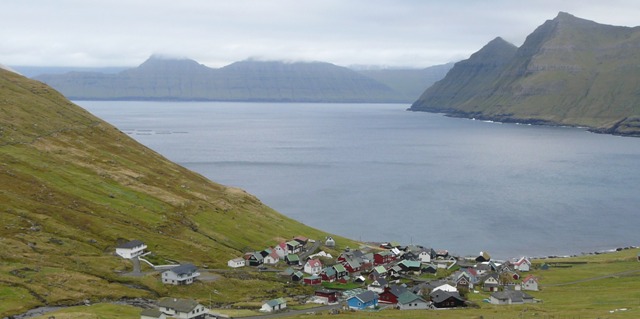First Ramsar seminar on the Faroe Islands
On 12-13 October 2010, Ms Annika Olsen, Interior Minister of the Faroe Islands Government invited Ramsar experts and representatives of local ministries for a special meeting on the Ramsar Convention. The seminar was prepared by Bergur Olson of the Faroe Marine Research Institute, based on exchanges and ideas created during this year’s Nordic-Baltic wetland conference in April in Norway (cf. our report here). Minister Olsen stressed in her address to the participants from the Ministries of Fisheries, Foreign Affairs, and Culture, from the Museum of Natural History, the Environment Agency, the Nature Conservation Society and the Bird Club, as well as the to the invited Ramsar focal points from Iceland, Greenland, Denmark and the Convention Secretariat, that she is determined to designate at least one Ramsar Site on the Faroe Islands. Her country’s most outstanding contribution for the world wide web of Ramsar Sites are exceptional cliff seabird breeding colonies and the nearby marine foraging areas sustaining these biodiversity hotspots.
 |
| Anni á Haedd and Minister Annika Olsen (right) of the Ministry of Interior listening to the presentations of the invited Ramsar experts |
The Faroese people understand that the very basis for their economic and social well-being and cultural integrity is a healthy and productive natural environment, and that this is becoming increasingly under threat due to climate change and overuse. Therefore the Government is interested to use Ramsar’s guidance and approaches to develop a system for protected areas and natural resources.
 |
| And also the rest of the audience at the first Ramsar meeting in the Government house was rather attentive |
The Faroe Islands are situated in the Northeast Atlantic, roughly half way between Scotland and Iceland, an archipelago of 18 mountainous islands, with a total land area of some 1400 sq. kilometres, a sea area of 274,000 sq. kilometres and a population of approximately 50,000, that dates back to the original settlements by Norsemen some 1200 years ago. As a self-governing territory under the sovereignty of the Kingdom of Denmark, the Faroe Islands legislate and govern a wide range of areas in accordance with the Home Rule Act of 1948. These include the conservation and management of living marine resources within the 200-mile fisheries zone, sub-surface resources, trade, fiscal, industrial and environmental policies, transport, communications, culture, education and research. With an economy overwhelmingly dependent on the fishing and aquaculture industries, the Faroese are keenly aware of the need to strengthen Faroese capacity to deal with the challenges of a globalised world.
 |
| Bergur Olson of the Faroese Marine Research Institute (left) showed the experts the potential coastal seabird cliff Ramsar Sites in situ |
After the meeting in the wooden houses of the Faroe Government at Tinganes, the oldest part of the islands’ capital Tórshavn, the participants travelled to Sandoy island, to discuss water management issues at a local lake and coastal dune area, surrounded by hay fields and sheep farms. The Ramsar experts from Greenland, Iceland, Denmark and the Secretariat were at this stage to exchange their site management experience with their Faroe counterparts. And from the nearby coastal strip, they could see in a distance the steep cliffs of the neighbouring islands that harbour huge seabird breeding colonies, hopefully to be designated for the Ramsar List. The Ramsar Secretariat looks forward to receiving the first Ramsar Site designations from the Faroe Islands, one very concrete result of the active Nordic-Baltic regional initiative for wetland conservation (NorBalWet) under the Convention.
 |
| Tróndur Leivsson of the Environment Agency drove the foreign Ramsar experts to a variety of landscapes and ecosystems of the northern islands, here the village of Funningur and its fjord |
Photos and report by Tobias Salathe